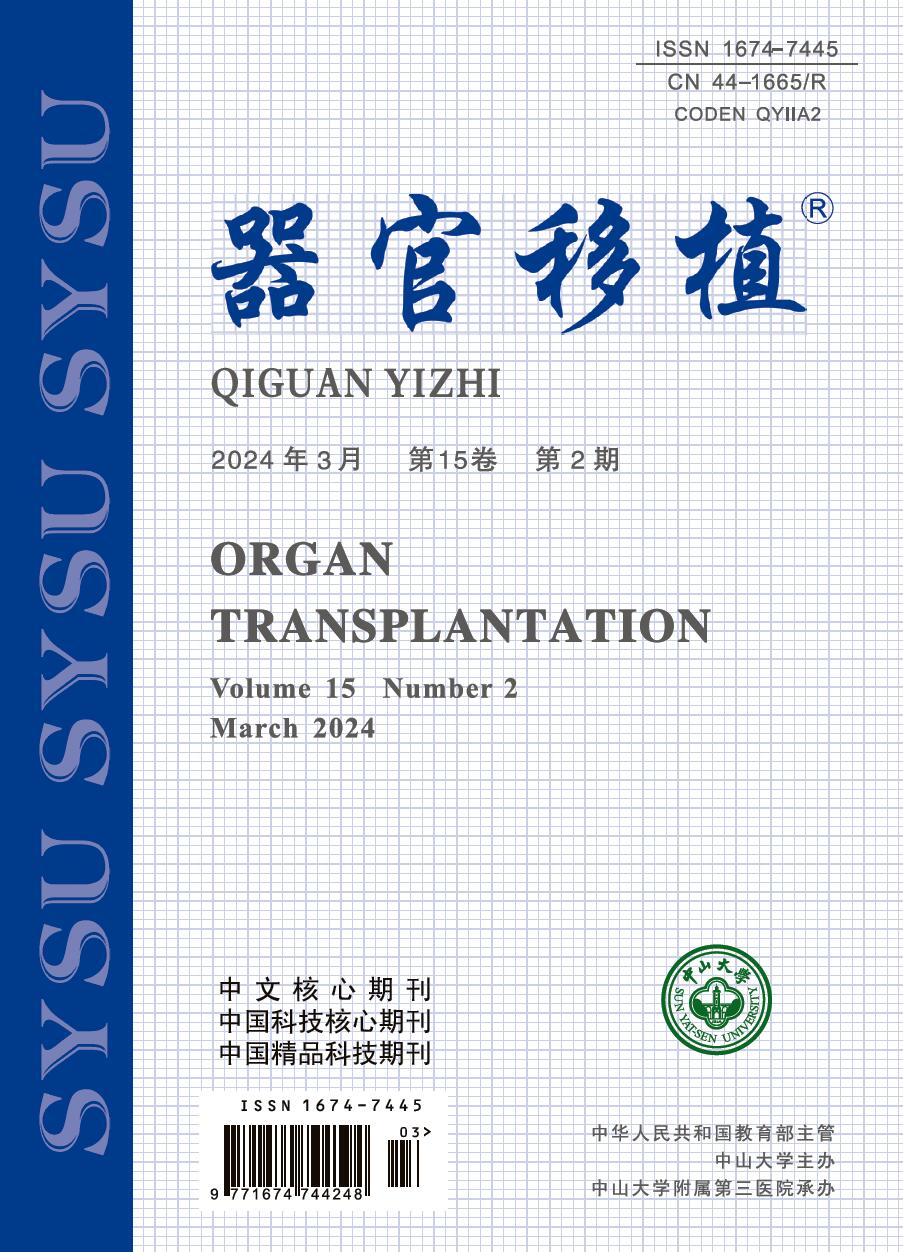Abstract:
Objective To analyze the dynamic changes and the influencing factors of T lymphocyte subsets in recipients with stable graft status within 1 year after lung transplantation. Methods Clinical data of 41 recipients with stable graft status after allogeneic lung transplantation were analyzed. The absolute value and ratio of T lymphocyte subsets in peripheral blood from recipients were measured by flow cytometry before operation, 2 weeks and each month (within 1 year) after operation, respectively. The effects of age, gender, body mass index (BMI), surgical method, incidence of primary graft dysfunction (PGD) after operation, and primary disease upon the absolute values of T lymphocytes were evaluated. Results Within 1 year after lung transplantation, the absolute values of CD3+, CD3+CD4+, CD3+CD8+T lymphocytes and CD4+/CD8+ ratio were changed over time (all P < 0.001). Compared with preoperative values, there was no statistical significance in the absolute values of CD3+ and CD3+CD4+T lymphocytes at 12 months after operation (P=0.659, 0.109), whereas the absolute value of CD3+CD8+T lymphocytes was increased (P=0.02) and the CD4+/CD8+ ratio was decreased (P < 0.001). Age, gender, BMI, surgical method and incidence of PGD after operation exerted no significant effect on the dynamic changes of absolute values of CD3+CD4+ and CD3+CD8+T lymphocytes (all P > 0.05). Primary disease before lung transplantation exerted no effect on the changes of CD3+CD4+T lymphocytes, whereas the postoperative absolute value of CD3+CD8+T lymphocytes was higher in recipients with infectious lung diseases (P < 0.05). Conclusions The absolute values of CD3+, CD3+CD4+, CD3+CD8+T lymphocytes in recipients with stable graft status after lung transplantation are relatively low in the early stage after lung transplantation, then gradually restore, and stabilize at 6 months after operation. Dynamic changes are not associated with age, gender, BMI, surgical method and incidence of PGD after operation of recipients.








